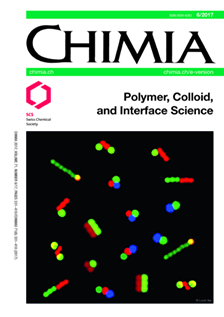Cellulose Nanocrystals: Surface Modification, Applications and Opportunities at Interfaces
DOI:
https://doi.org/10.2533/chimia.2017.376Keywords:
Cellulose nanocrystals, Colloidal liquid crystals, Nanocomposites, Nanotoxicology, Pickering emulsions, Surface modification, Viral inhibitorsAbstract
Cellulose nanocrystals (CNCs) are rod-like nano-scale particles that are widely available in nature and have recently gained great interest in both research and industry, due to their high strength, high crystallinity, high surface area, low density, biodegradability and low toxicity. CNCs can be easily extracted from natural cellulose sources and are broadly useful, for example in polymer reinforcement, paper manufacturing, and rheology modification. The high density of functional groups on the surface of CNCs allows various chemical surface modifications, which permit tuning the properties of CNCs over a wide range. This review gives a brief overview of surface chemical modification of CNCs, focusing especially on those often utilized for our own research, which focuses on some of the most prominent areas of interests of CNCs, notably polymer reinforcement, healable polymers, stimuli-responsive nanohybrids, Pickering emulsion stabilizers, viral inhibitors, and cholesteric liquid crystal assemblies.Downloads
Published
2017-06-28
Issue
Section
Scientific Articles
License
Copyright (c) 2017 Swiss Chemical Society

This work is licensed under a Creative Commons Attribution-NonCommercial 4.0 International License.
How to Cite
[1]
Chimia 2017, 71, 376, DOI: 10.2533/chimia.2017.376.







